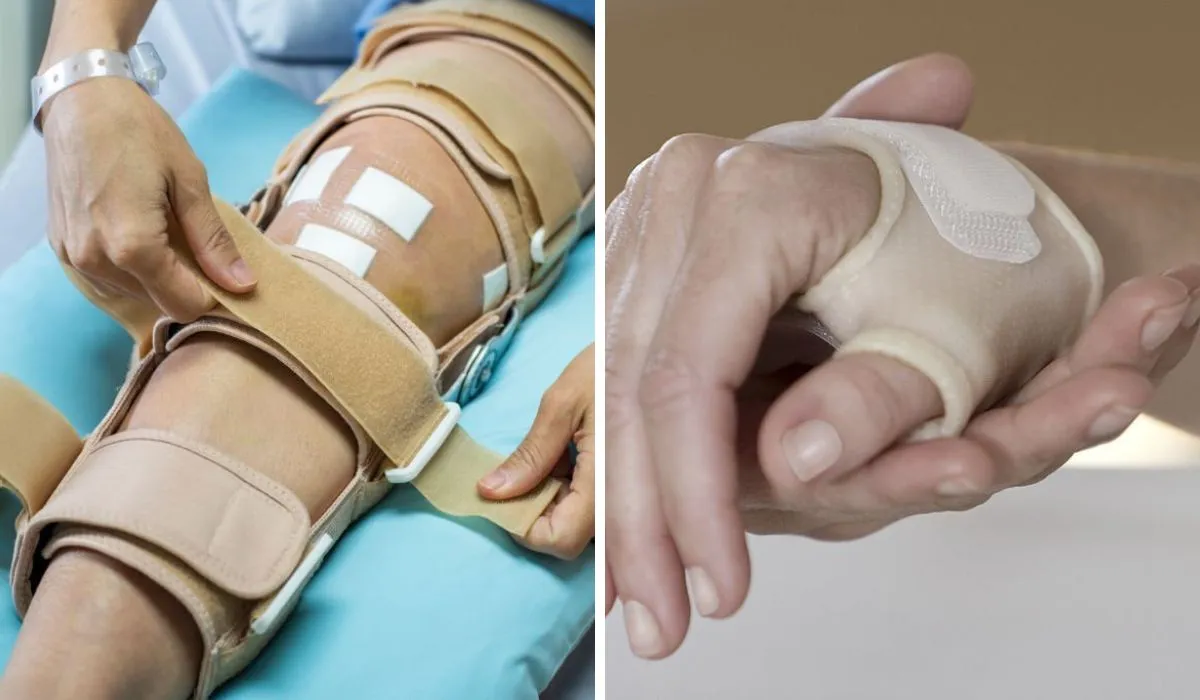After an injury or surgery, doctors often recommend using a brace or splint when a limb or joint needs additional support. Even though many of us use these two terms interchangeably, they refer to two different medical devices. Hence, all healthcare workers must understand the difference between the two to treat their patients appropriately.
Also, when doctors recommend using one of these devices, most people wonder why they specifically mention one type but not the other. In this article, we will discuss how these devices are different from each other and their uses.
Differences Between Splints And Braces
Although both splints and braces are used to treat acute injuries or chronic conditions, they vary in form and application. Let us look into each of them in detail.

Braces
The braces are usually promoted as a therapeutic measure. These are more stable orthopedic support devices suitable for long-term care. Braces are preferred in situations where an impaired limb or torso needs support for an indefinite time.
Their main use is to help heal tears or sprains that demand occasional movements to rehabilitate the affected limbs or bones. Braces can also be utilized to treat minor fractures. They are typically flexible and designed to offer support rather than complete immobilization. Braces are made of softer materials such as neoprene or cotton with straps, elastic bands, or metal frames.
Splints
Braces are also stable devices, but splints are used as an emergency or short-term fix. These support devices are mostly used when we need to immediately immobilize the injured parts to accelerate the healing process. A splint is recommended when a bone breaks or fractures. Through their immobilizing properties, they keep bone fragments from damaging blood vessels, nerves, skin, and other body organs.
They are designed to maintain movements from zero to minimal and to make sure the bones or fractures are aligned correctly. There are two types of splints available: soft and rigid. Depending on the severity of the injury, doctors decide whether to use soft or rigid splints. The soft splint is made of foam or fabric, while the rigid one is made of firm materials like metal or plastic.
Considering the above-mentioned facts, we could say that a brace is used to support and correct a limb or torso for an extended period, while a splint is used in emergencies to immobilize the injured body part. Splints are commonly used to treat bone fractures, but they may also be used to treat sprains, depending on the circumstances.
On the other hand, braces are usually utilized for treating tears and sprains and occasionally for the rehabilitation of broken bones. But both splints and braces are applied during emergencies and as first-aid measures and are used on the foot, ankle, knee, hand, wrist, elbow, shoulder, and spine. However, splints are more commonly used than braces in emergencies.
Read More:- What Are The Benefits Of Sports Physiotherapy?
Splint Or Brace, Which Is Better?
Doctors choose either of the two based on the location and severity of the injury or condition. Rigid splints are recommended when your condition requires complete immobilization. But if it requires only partial immobilization, then a soft or a brace is more suitable.
In the latter situation, the reason why it is better to opt for a brace or soft splint is that they promote daily activities while controlling unwanted movements. Braces are also beneficial to people with arthritis as they allow them to retain mobility and, at the same time, provide stability and support. Hence, it is wise to consult a doctor before you decide what type of treatment your injury or condition requires.
Read More:- 10 Most Common Orthopedic Sports Injuries: Identify Each One Of Them
Bottom Line
The use of braces and splints in the treatment of injuries is often interchangeable. However, these two devices serve different purposes and have different forms. In general, braces are more stable devices that are used for long-term care, while splints are typically used in short-term or emergency conditions.
Basically, braces allow you to move your limbs and bones as you’re rehabbing them, while splints immobilize your whole body. But be mindful that the severity and location of the injury are what help the doctors decide what kind of intervention is best for you.